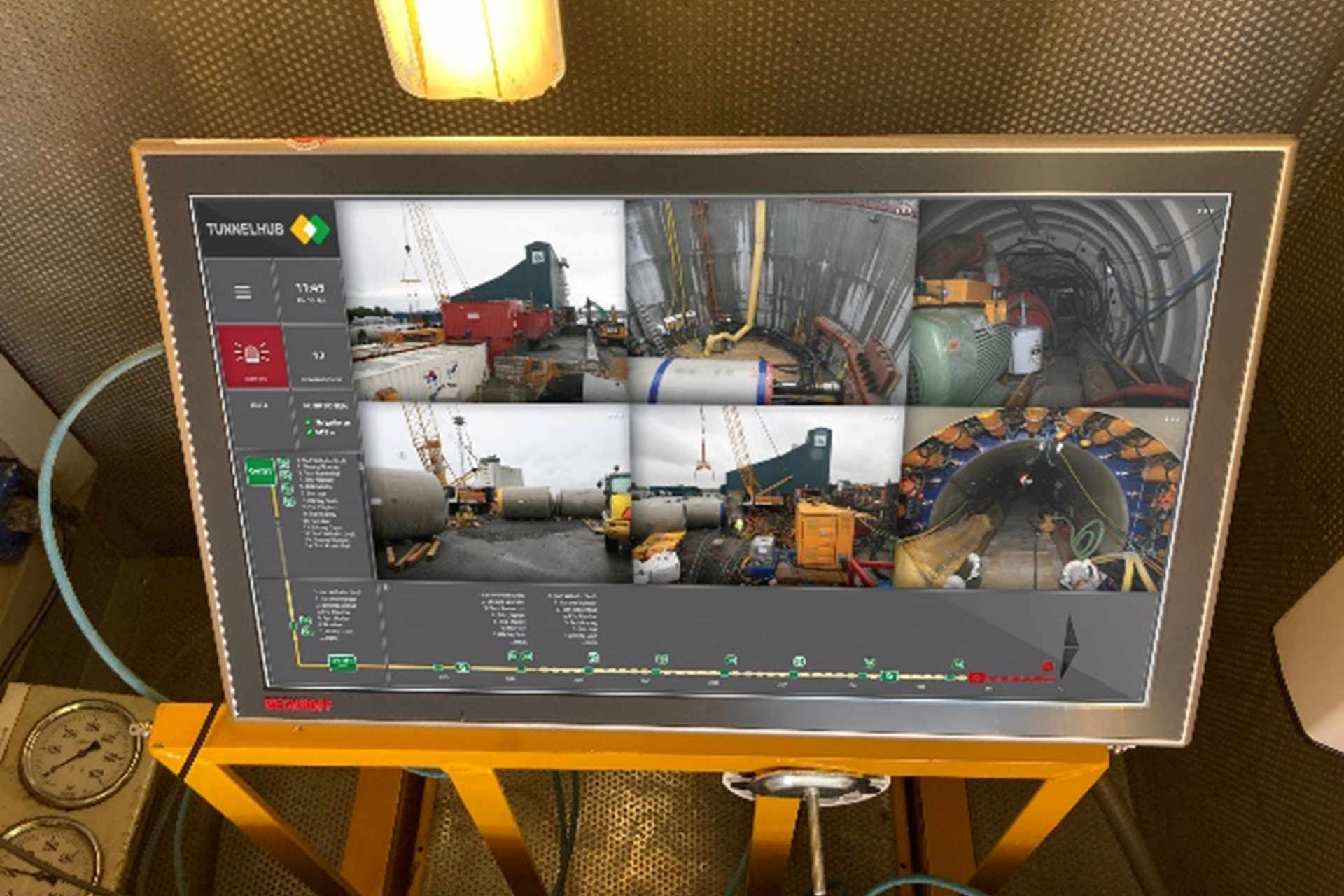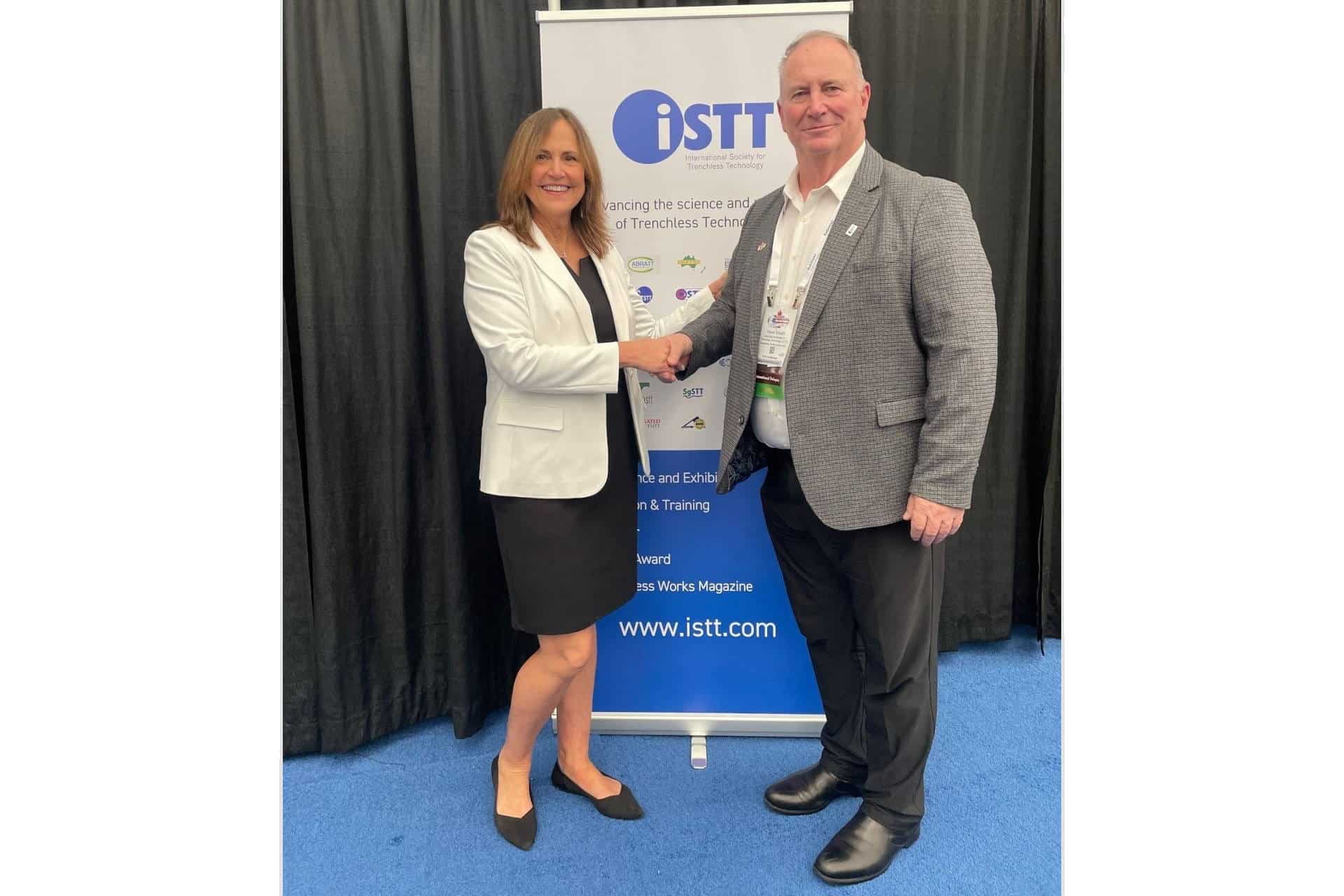Pipe Relining with Glass-Fiber Reinforced Plastic Liners
 Pipe lining with light-curing glass-fiber reinforced plastic (GFRP) liners isamong the most important options for sewer rehabilitation planners because oftheir short construction time, minimized construction site set-up and, finally,the outstanding characteristics of the finished liner.
Pipe lining with light-curing glass-fiber reinforced plastic (GFRP) liners isamong the most important options for sewer rehabilitation planners because oftheir short construction time, minimized construction site set-up and, finally,the outstanding characteristics of the finished liner.
Brandenburger Schlauchliner, based in Landau, Germany, has set a new standardin the renovation of walkable, large diameter sewer with GFRP technology. InDecember 2005, four pipe liners with a 16.5-mm wall thickness were used torehabilitate brick egg-shaped storm sewers in Hamburg-Osdorf, in combinationwith a curing procedure under commission by the sewer system operator — theHamburg Water Works.
The condition of the brick storm sewers, (class V) 650/1100, onDörpfeldstraße Street in Hamburg-Osdorf had become noticeable in the course ofthe Hamburg sewer rehabilitation program. The damage assessment determined thatin addition to washed-out joints and encrustations, there were also isolatedlongitudinal fractures and faulty points in the masonry. In total, 345 m ofsewer channels under Dörpfeldstraße were designated for rehabilitation.
As is usual for Hamburg, these sewers were to be rehabilitated using pipelining. Trenchless methods were desired here, primarily because the apex coverof the sewer was 8.5 m.
In light of the damage assessment of the sewers and the special boundaryconditions, Brandenburger decided to offer a liner with a unique size to solvethe problem. The project was eventually commissioned by the Hamburg Water Works.A 16.5-mm thick GFRP liner was used with a resin system based on light peroxidecombination curing. In this process, a peroxide hardener is mixed withconventional photo-reactive UP resin, which doesn’t react until temperaturesreach 65 C. This means that such a liner can be stored without problems for manymonths at moderate temperatures and when cooled.
When the photo-reaction is initiated by UV light during the curing process,it also directly ignites the peroxide reaction — which is self-supporting — sothat two simultaneous reactions lead to the reliable curing of the liner. Whilethere are different curing limits available today with the various light-curingliners based on reduced transparency or uneven optical refraction indexes, theabove-mentioned combination curing is deemed necessary by various light-curingpipe liner manufacturers for thicknesses from 5 to 6 mm so that the curing isreliable and also economical.
Brandenburger employs combination curing that starts at 10 mm because of theextremely good transparency of the material used in coordination with theapplied UV curing equipment. The dimensions achieved in Hamburg-Osdorf had neverbefore been attained.
Secured by a 250 liters/sec peak pump performance, the liners were installedinto the rehabilitation sections using this procedure. In each thoroughlycleaned section, a pre-liner was first drawn in to reduce the friction of theheavy liner as it was drawn in across the base. For a GFRP liner of this size,excavations were not necessary and the shaft cone did not need to be removed —which allowed for an enormous acceleration of the entire process. A UV lamptrain was then brought through a pressure lock into the liner, which had beenexpanded by air pressure to form-fit in the sewer. The lamp train has an outputof 6,000 watts.
The lamp train traveled through the liner in the Osdorfer class V sewers atan even speed of 40 cm/min. An interesting and important insight from theBrandenburger engineers’ perspective was that the 16.5-mm liner cured just asquickly as those with 12-mm wall thickness; the curing time with the combinationreaction does not increase proportionately with the wall thickness. Even theliner under Dörpfeldstraße — which was the longest at 92 m and the heaviest atabout 10 tons — was fully cured in four hours. At four hours installation time,four hours curing and then five hours disassembling (which included the openingof the connections), each section of the construction could be completed withinone long work day.
Ultimately, the entire time and technical effort with this procedure in thewalkable diameters are no more than what what would be needed for a sewer with anominal diameter of 500 mm. This is significantly different than other pipelining systems in which time and effort increases with the diameter of thesewer. Some advantages of the GFRP light curing are:
• No water consumption
• Minimal power consumption with light as opposedto hot water
• Low vehicle use even with larger diameter sewer
• Noscaffolding installation in the traffic area of the shafts during theinstallation and curing phase
• Faster curing time of larger diameters thancuring with hot water, thus quicker project execution
• No waiting periodbefore opening the connections because shrinking in the GFRP pipe liner does notoccur
In Hamburg-Osdorf, the four construction sections — which were a combined 354m long — were executed within two work weeks, which included all the preparationand other related tasks. An independent inspection of the project confirmed tothe client’s satisfaction that all the required technical specifications, inaccordance with the regulations of the qualification requirements and thequality assurance plan of the Hamburg Water Works, had been observed.
Another record for the GFRP liner was set by Brandenburger during varioustests in Landau in December 2005. Liners with a nominal diameter of 1,000 mmwith wall thicknesses up to 28 mm were cured using the combination curing UVlight/peroxide process as well.
In the presence of managers from the DIBt, a materials testing facility, pipeliner samples or ring samples for long-time apex pressure trials were taken andlater tested. The results showed the following values: Outer diameter 992.83 mm;wall thickness 28.77 mm, short-time Young modulus 13,543N/mm2. In this testseries, the new Brandenburger BLUETEC UV curing equipment was tested.
This technology offers advantages, especially in larger diameters and wallthickness as compared to the standard conventional equipment. For the GFRP linertechnology in general, and for Brandenburger in particular, these successes withthe greater wall thickness signify the first step into a new and increasinglyinteresting market segment of trenchless sewer rehabilitation.
Jens Goll is in technical service with Brandenburger Liner GmbH &Co., which is headquartered in Landau, Germany.




